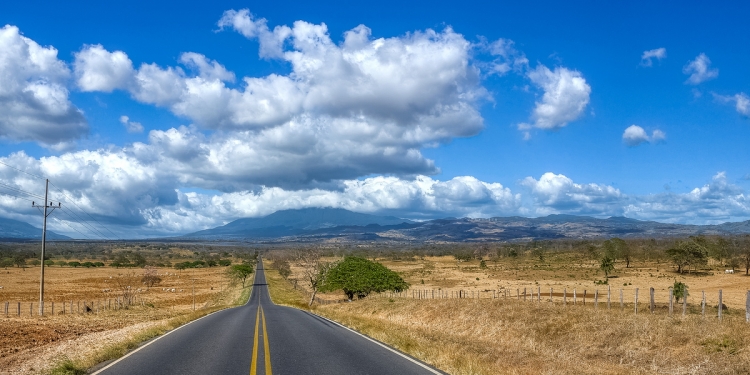Some argue that Mexico has only two seasons —wet and dry— but this is too simplistic to describe the natural cycles which come to pass across this great land of three lands.
As we have remarked in articles about the local environment here, the rainy season delivers vitality and color to the landscape with its dramatic and drenching storms which begin around late spring each year.
However, when the rainstorms vanish in the late fall —almost as abruptly as they were ushered in by the mystical wind that brought them in the spring— the dry cycle begins to unveil a significant change as the moisture gradually evaporates from the ground and the air becomes noticeably drier.
The transition from drenching rain to dry land
When the rains eventually stop, there is so much moisture near the surface of the ground that it takes some months for the full effects of the dry season to begin to be seen and felt across the local environment. It’s this ‘evaporation’ period, usually lasting about eight to twelve weeks, that creates a graduated transition from wet to dry.
When the dryness does finally take hold, landscapes that were moist, verdant, and colorful turn to shades of yellow, brown and orange; dust and dander roam freely through the air, and the soft fragrances of rain-soaked earth and flora are substituted by a dry and sometimes grating ambience that can, on occasions, combine to create an uncomfortable mixture of heat, dust, and dander.
The dry season by regions across Mexico
Regions across Mexico experience the effect of the dry season in different ways, influenced by their latitude. elevation, and proximity to the ocean.
Northern Mexico
The vast, dry, deserts of northern Mexico remain arid for most of the year; the majority of the rain that falls in this region appears during mid-summer—July through September.
The Baja California peninsula doesn’t experience a ‘rainy season’ per se and typically remains dry most months throughout the year; the southern areas of the peninsula can experience some rainfall in August and September; and the entire the Baja peninsula can be affected by hurricanes which typically brew anytime from June through November and will break any dry spells when torrential rains and tropical storms make landfall.
Mexico’s central highlands
The central highland plains, from Zacatecas in the north to Oaxaca in the south, are defined by a series of majestic mountain ranges, some of which are volcanic. This region is home to many colonial towns and cities situated at elevation.
These places start to turn dry during the late fall, and become very dry and dusty by mid-winter. High daytime temperatures peak during May, by which time both people and nature yearn for the refreshing return of the rains that typically return in May or June.
Mexico’s Pacific and Gulf coasts
The dry season begins in late fall, and if you’re situated along the Pacific or Gulf Coast, you can expect temperatures to begin to warm-up noticeably from February and by late March these coastal areas will be drenching hot and humid. The heat and humidity will prevail through the dry season, interspersed by sporadic storms until the rains begin again, typically around late May or in June.
The Copper Canyon and Chiapas
Two of Mexico’s areas of out outstanding natural beauty offer quite different experiences during the dry season.
Copper Canyon in the dry season
The breath-taking landscapes of the Copper Canyon in Mexico’s northwest region turn to hues of yellow, orange, and brown during the dry season that begins in November and breaks in July. During these dry months, the rivers ebb down to their lowest points, and during the winter months snowfall may settle on higher ground. Most travelers visit the canyons between July and November when the canyons are verdant and the rivers swell with water and wildlife, although some visitors purposely travel to the region during the dry season to experience the contrasts, especially if they have visited before during the rain season.
Chiapas in the dry season
The moist, sub-tropical, region of Chiapas that is carpeted in forest and foliage remains verdant for most of the year, but rains are rare between February and May. When the rains return in earnest during June, the turquoise waters of the Agua Azul waterfalls turn brown as the rains stir-up the river’s sediment; the ‘postcard pictures’ you often see of these splendid waterfalls are usually taken at the end of the rain season in late fall and early winter, when the rivers are swollen and the sediment has settled.
The Yucatán peninsula
The rainy season on Mexico’s southern peninsula typically ends in late October or early November. As the region is situated near sea level, dry season temperatures begin to climb steeply from February onwards and reach their high points in April and May, when daytime high temperatures can touch 45-50 degrees Celsius (113-122 Fahrenheit). The rains in the Yucatán region typically return in June, and although they can help to temper the heat, the humidity persists.
This region is also home to Cancún and the Riviera Maya and is why the ‘dry season is the high season’ for beach resort visitors and ‘snowbird residents’ (people who escape cold winters to live in Mexico) as daytime temperatures are more comfortable and afternoon rainstorms are infrequent.
Localized rains during the dry season
Rainstorms can roll in across the landscape even in the middle of the dry season. They are akin to unexpected small gifts as they are infrequent, usually brief, and invariably localized: it can rain for a couple of hours in places across Mexico City and remain bone dry in the neighboring state of Morelos during the same week.
The highland mountain ranges tend to encapsulate these abrupt micro storms into the nooks, crannies and valleys of the local topography—soaking one place for a couple of hours and leaving another parched even though it’s only a few miles away.
Dry season rainstorms, when they happen, are usually shorter and much less intense than the dramatic and drenching seasonal storms that characterize the rain season in Mexico. Overcast days that don’t yield rain can help to temper the day’s heat and make daytimes feel fresher and more comfortable.
Visiting Mexico during the dry season
Some visitors to Mexico purposely avoid the rain season, but as we’ve remarked elsewhere, this can be a mistake as the rains bring vibrancy, color, and fragrances to the local environment that you’ll never experience in the driest months.
By the same token, the dry season —that more or less runs from late fall to late spring— offers-up some opportunities that you won’t find when the rains arrive. Beach locations are popular in the dry season as coastal temperatures moderate from their summer highs to become comfortably warm; rain is infrequent, and hurricanes don’t form this time of year.
The Monarch Butterflies overwinter here during the dry season, and it’s also the most popular time of the year for visits to Mérida and the Yucatán peninsula.
Learning to live through Mexico’s dry season
Most of the ‘snowbirds’ (part-time winter residents) arrive in Mexico sometime during October or November and stay until March or April of the following year, thus enjoying comfortable autumn and winter climates and avoiding the heaviest rains.
Practical advice for living well during the dry season
If you’re living in Mexico, or are staying for an extended period, between November and May each year learn about practical tips for living through the dry season, including helpful advice about how to stay well and comfortable during these, the driest months of the year.
Discover Mexico’s weather and climates
Mexperience helps you to discover Mexico’s diverse topography and climate as you make your lifestyle and leisure plans:
- Learn about how Mexico is a land of three lands
- Discover Mexico’s climate through the seasons
- The rain season begins in May/June and yields to the dry season in October/November
- Check individual travel guides here on Mexperience for climate by location. You can get full details about the weather by region and season on our guide to climate in Mexico.
- Browse the latest articles about climate and weather in Mexico
Mexico in your inbox
Our free newsletter about Mexico brings you a monthly round-up of recently published stories and opportunities, as well as gems from our archives.













